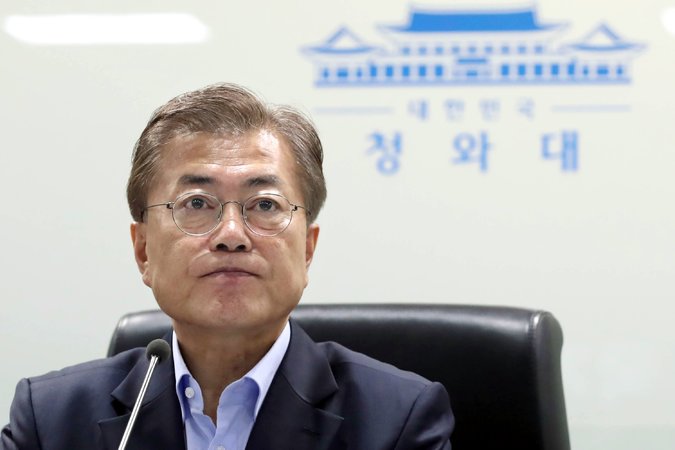The Peninsula
Building a Safe South Korea
Published June 2, 2017
Category: South Korea

By Gwanghyun Pyun
“The State shall endeavor to prevent disasters and to protect citizens from harm therefrom”
– (6), Article 34, Constitution of the Republic of Korea
During his campaign, President Moon Jae-in said that the president and the Blue House should be the “control tower” for disaster management, citing Article 34 in the Korean constitution. In doing so, he pointed to a series of large-scale disasters which impacted the Korean people over the last several years, including the sinking of the Sewol ferry and the recent outbreak of avian influenza. This statement resonated with his supporters, causing him to name ‘Safe South Korea’ as one of his 12 major pledges.
Below are some of the disasters that have plagued the country over the last few years, including a few ongoing issues that Moon will have to deal with as he begins his presidency.
Major disasters for the last three years.
Sewol ferry, 2014
On April 16, 2014, the Sewol, a ferry transporting 476 passengers, including 323 Danwon high school students, sank off Jindo Island. The sinking of the Sewol was broadcast live on television, and Korean people watched for more than 20 hours as the ferry sank completely, killing 295 people.
Investigators said that the Sewol was carrying twice its weight limit, and this caused the ferry to capsize. In addition, the Sewol rescue operation missed the key window to rescue passengers, because its crews failed to notify the proper authorities in the region. Even after missing the prime response window, the rescue operation did not work well because responsibilities among different agencies were not clearly designated.
Middle East Respiratory Syndrome (MERS), 2015
MERS was brought to South Korea by a man who had traveled to Bahrain in May 2015. It spread so rapidly as to infect more than 100 people a month after the official outbreak. In the end, MERS infected 186 Koreans and killed 36 before the South Korean government officially declared a ‘de facto end’ to the outbreak.
The government did not provide much information on MERS to the public at first, causing people to panic. For example, the Ministry of Health and Welfare hid the list of hospitals where the infected people stayed to avoid creating unnecessary anxiety among the hospital customers. The World Health Organization (WHO) pointed out the government response was late, despite the fact that initial countermeasures are important for infectious disease management.
Avian Influenza (AI), 2016
Last December, AI spread quickly nationwide and damaged Korean stockbreeding farmhouses in most of regions of the country. It was recognized as the worst AI accident ever in South Korea, as those farmhouses had to slaughter 26.7 million chickens, 2.5 million ducks, and 2.5 million other birds to prevent the spread. People suffered from anxiety over possible transmission to humans and a surge in the price of eggs.
Koreans blamed state and provincial governments for the crisis. Professor Jae Hong Kim at Seoul National University said that the failure of initial preventive measures and the late response of the government made the disaster worse.
Current issues for national safety
Fine dust
These days, the most urgent safety issue is the notorious fine dust. The public was shocked and riveted when Airvisual ranked Seoul No.2 among the world’s cities for serious air pollution on March 3 this year. An Organization for Economic Cooperation and Development (OECD) report said within 60 years South Korea is expected to have the highest death toll in the world due to air pollution.
Nuclear Power Plants
The danger of nuclear power plants is also becoming a hot issue. South Korea has 23 active nuclear power plants, five plants in the course of construction, and 12 more new plants already planned. In addition, Korea has the highest density of nuclear power plants in the world, with six million neighborhood residents near the plants. Last year, a series of earthquakes near Gyeongju raised concerns about the ability of these plants to withstand natural disasters.
Moon promised ‘Safe South Korea’
For a safe country, managing disasters is as important as preventing crime and deterring war. According to an article from Monthly Chosun, Koreans were disappointed that the former government did not deal with the sinking of the Sewol ferry and MERS outbreak well.
President Moon said Korea should undertake reforms to avoid the mistakes of the prior administrations and show greater responsibility for addressing national safety. To do this, he will be making a new crisis management system for national-scale disasters and handle domestic problems by becoming the “control tower” as the president.
As Moon promised, he has to show his management ability when the next national disaster comes. Meanwhile, he also promised a 30 percent reduction of fine dust and vowed to create a “nuclear power zero era.” In order to meet public expectations for a “Safe South Korea,” the Moon administration should not only address the mistakes made in prior disasters, but also prepare for new kind of disasters such as the recent ransomware attack that hit several major companies around the country.
Gwanghyun Pyun is currently an Intern at the Korea Economic Institute of America as part of the Asan Academy Fellowship Program. He is also a student of Sogang University in South Korea. The views expressed here are the author’s alone.
Photo from arif_shamin’s photostream on flickr Creative Commons.
